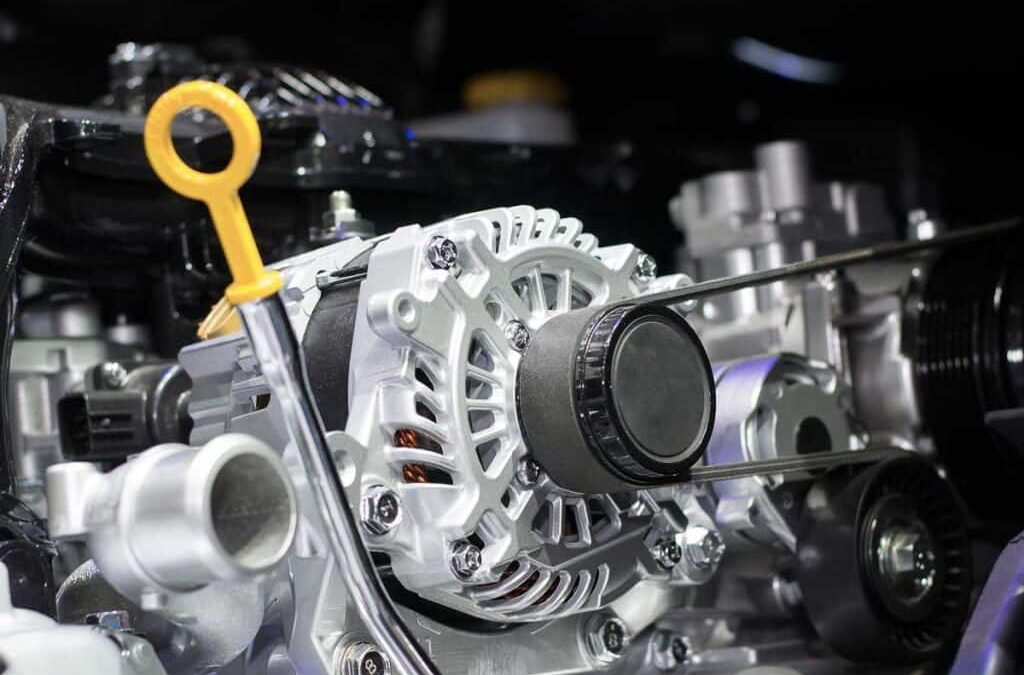You might well have heard of the alternator in your engine, but do you actually know what it does? It’s actually among the most critical components in your vehicle, and responsible for charging your car’s battery by turning mechanical energy into electrical energy. It also powers most of your car’s other electrical components.
As a crucial part of the whole engine operation, it’s essential then that you keep the alternator healthy and deal with alternator problems quickly, but how might you know if your alternator is experiencing a problem? This is the core question of today’s blog. Below are six key signs that you have a faulty alternator.
1. Your Have a Dead Battery
As we mentioned above, one of the primary functions of the alternator is to recharge your battery as you drive. This is why a jump start of the car that just provides a tiny amount of power to get the engine started is all you need. The engine and alternator will take care of the remaining charging process.
If the alternator is faulty, then your car’s battery will not be receiving its recharging force and will go dead quite soon. It could happen while you’re driving, or the battery might go dead overnight. A dead battery without any sign of electronics having drained it (e.g., leaving the dome light on overnight) indicates that your alternator could be faulty or broken.
2. Your Headlights Are Either Dimmed or Overly Bright
The alternator is supposed to work at a steady voltage. A faulty alternator will struggle to maintain that consistency, either dipping below its regular voltage or rising far above it. When the alternator voltage dips below its regular threshold, you might notice that as a result your headlights become dimmer. This obviously presents some pretty serious safety concerns, especially when driving at night.
On the other hand, the voltage might also be too high, which causes your headlights to run too brightly. This also is a problem because while the road ahead will be well illuminated, the additional voltage puts extra strain on the system and makes it unstable. The lights often start flickering erratically in these conditions.
3. Glitchy Electronics in the Vehicle
As we said earlier, one of the functions that the alternator performs is to provide the electricity generation for your car’s various electronics. If the alternator is faulty, then those accessories will not get the power they need and will become glitchy. These glitches might involve them cutting out suddenly or flickering on and off. They may also be slow to respond when you push buttons or try to use them.
This may appear random to your eyes, but in fact in modern cars this kind of glitchy behaviour is “planned” by the vehicle’s on-board computer. There is programming in the computer that tells it what electronics to prioritize maintaining electrical current and where it can make cuts. This is to help more critical systems never to lose power. It’s a kind of “rolling blackout” system for your car.
4. Difficulty Starting and Frequent Stalls
The alternator is a key component in getting your car started up. When you are having trouble getting the car to start, a faulty alternator is quite likely the main culprit. You’ll know this if you go to start your car but all you hear is a clicking noise instead of the familiar whirr and roar of the engine firing up.
While you’re out on the road there can be trouble as well. If your car is frequently stalling as you slow down or pull up to lights or a junction. You might just put it down to bad driving, but in fact the more likely scenario is that spark plugs are not getting enough electrical power from the alternator and so can’t keep the engine going.
5. Burning Smell
If you notice a burning smell when you start up the car or while you’re driving, it could be an indication that key components within the alternator are starting to wear out. The smell of burning specifically is likely to be a rubber smell, but it could also include burning wires like an electrical fire.
The rubber smell is caused by the alternator’s pulley bearing when it seizes up and starts to get past its prime. The wire smell is caused by the alternator being strained and its wires starting to fray and burn. The alternator tries to compensate by pushing more electricity through these weakened vessels, and that’s what you smell.
6. Battery Warning Light Appears
Are you a driver who tends to ignore warning lights on the dashboard? If so, you should try to break that mindset. When something is going wrong with the alternator, the battery warning light usually appears on the dashboard. Many drivers tend to see this warning light and assume that there is a problem with the car’s battery. They may open the hood, inspect the battery for signs of leaking or corrosion, but in fact the problem might be somewhere else.
The battery warning light also covers issues with the alternator. This is because alternators are designed to work between a standard range of voltages — 13 to 14.5 volts, actually — and if it’s faulty or failing, then its voltage will drop out of this range. This will cause the battery warning light to appear on your dash.
Conclusion: Don’t Let the Alternator Slip Away
What could be a faulty alternator today could turn into something far more serious and disruptive in your life another day. If you detect any of the above signs or have any other reason to believe that your alternator is faulty, then you need to fix it up as quickly as possible.
If a faulty alternator can be fixed, repairs are not cheap but they’re cheaper than having to replace a fully broken alternator.



